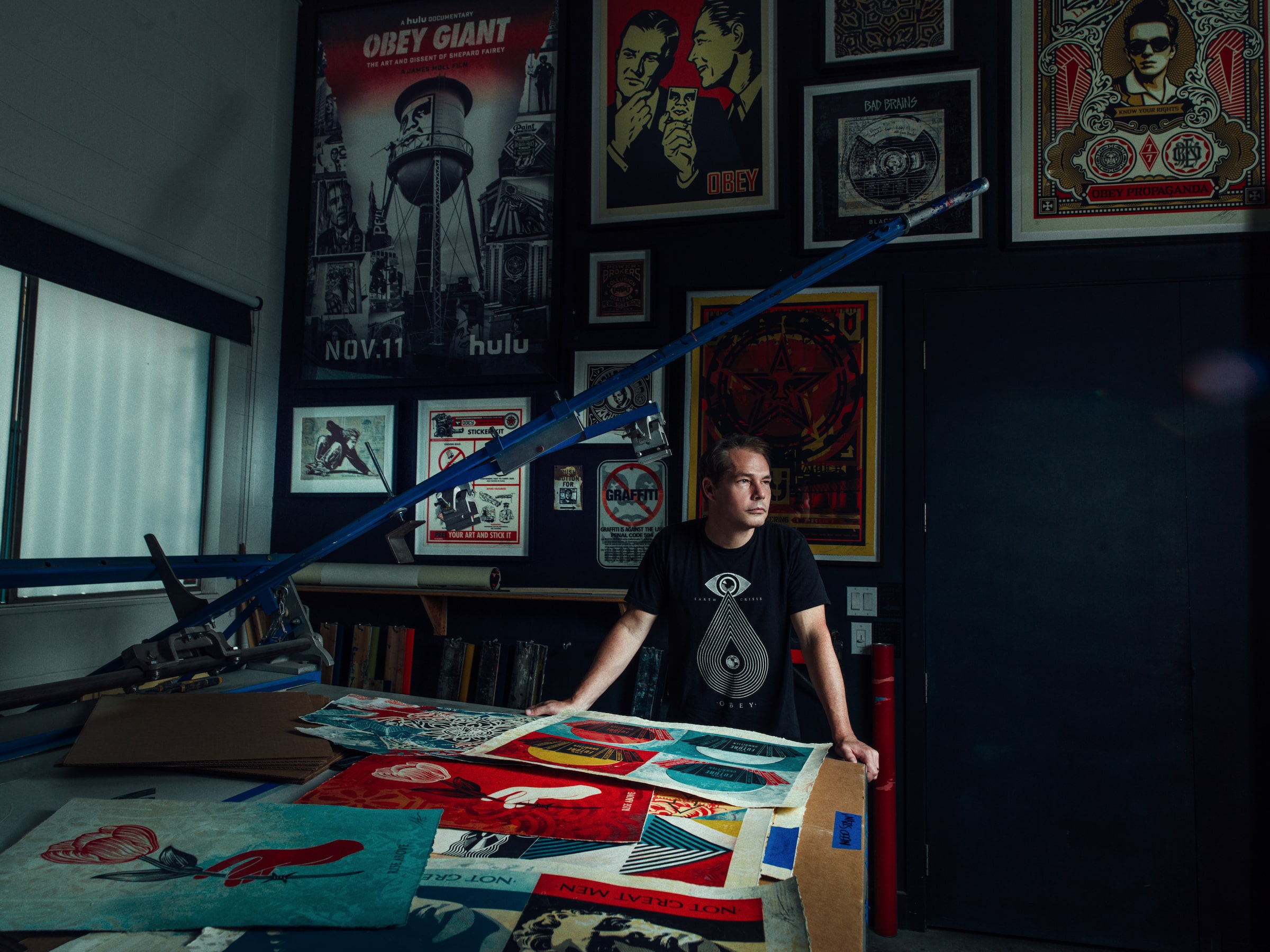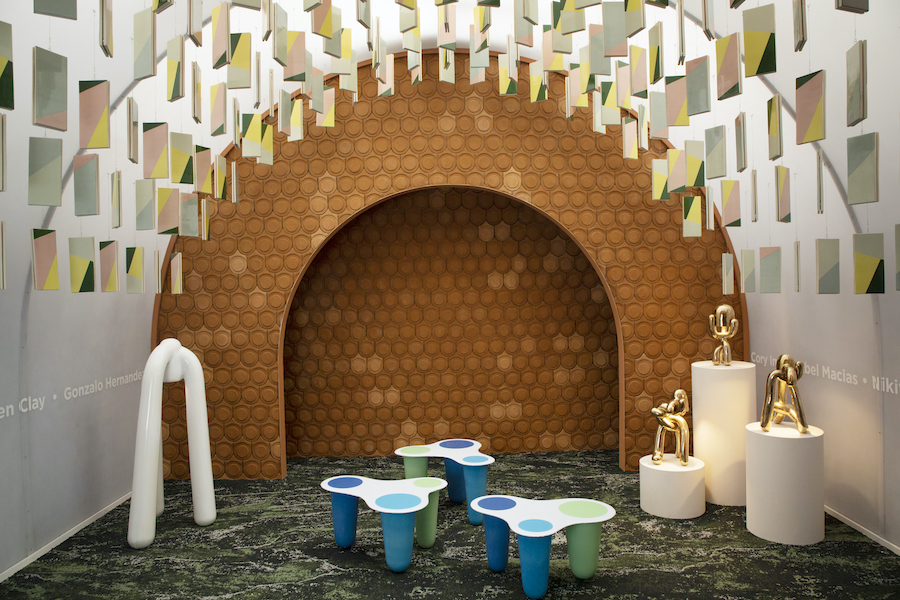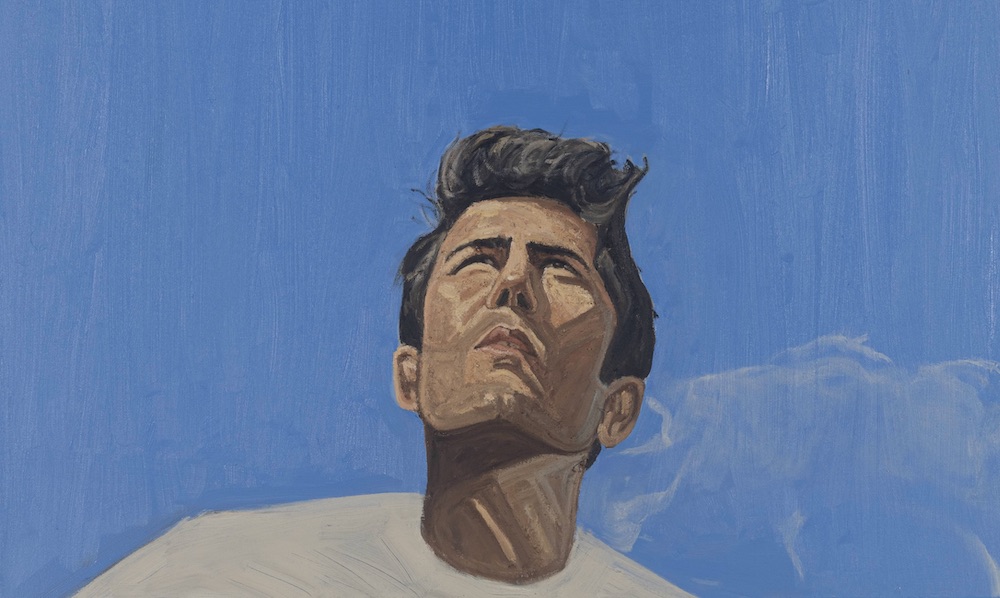Apparatus design studio co-founder Jeremy Anderson‘s latest venture in ceramics takes shape in a body of work entitled “The Piccolo Parade.” Originally slated to open to the public in New York on March 12, the show was moved online due to COVID-19.
One day at his studio in Rhinebeck, New York, Anderson created an off-center hole at the top of a ceramic piece. He realized it belonged and created an entire series of new vessels named “piccolo,” a nickname from his late boyfriend who unfortunately perished in a car crash in 2001.
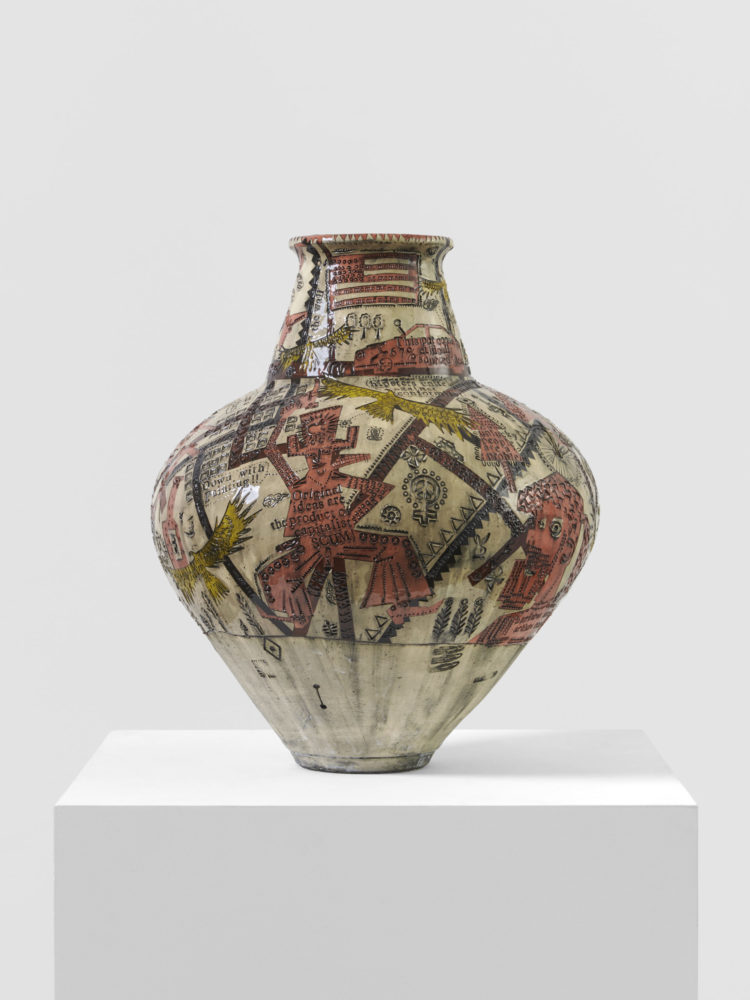
Grayson Perry, “Sacred Beliefs of the Liberal Elite”, 2020, 22 1/2 x 20 1/8 x 20 1/8 in, ceramic; © Grayson Perry, courtesy of the artist and Victoria Miro.
Anderson’s ceramics are inspired by his personal relationships, surroundings, paper dolls, stuffed animals, as well as Bernd and Hilla Becher—two German conceptual artists known for documenting industrial buildings and organizing them in typology.
A few weeks ago, Whitewall spoke with the Anderson about creating in isolation, what he hopes his work express, and where he feels the future of craft is.
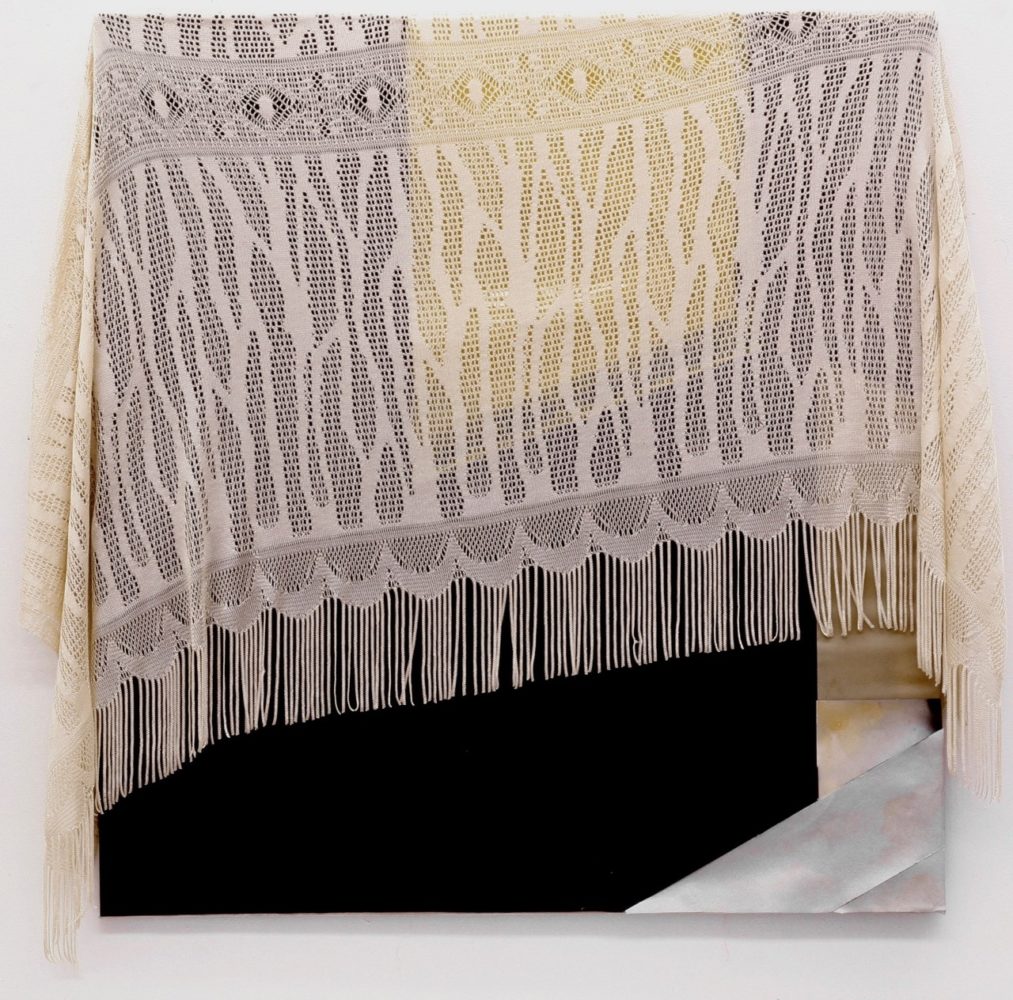
Kai Althoff, “Untitled”, 2005, 95.3 × 86.4 cm, Fabric, enamel, spray and oil paint, plastic adhesive foil; © Kai Althoff, courtesy of Whitechapel Gallery.
WHITEWALL: How are you doing?
JEREMY ANDERSON: I’m doing well, but it’s been a bit of an emotional rollercoaster. There are those moments of fear and anxiety, but also an incredible feeling of gratitude for the people keeping us safe, reconnecting with family and friends in a more meaningful way, and just being okay with a moment of pause.
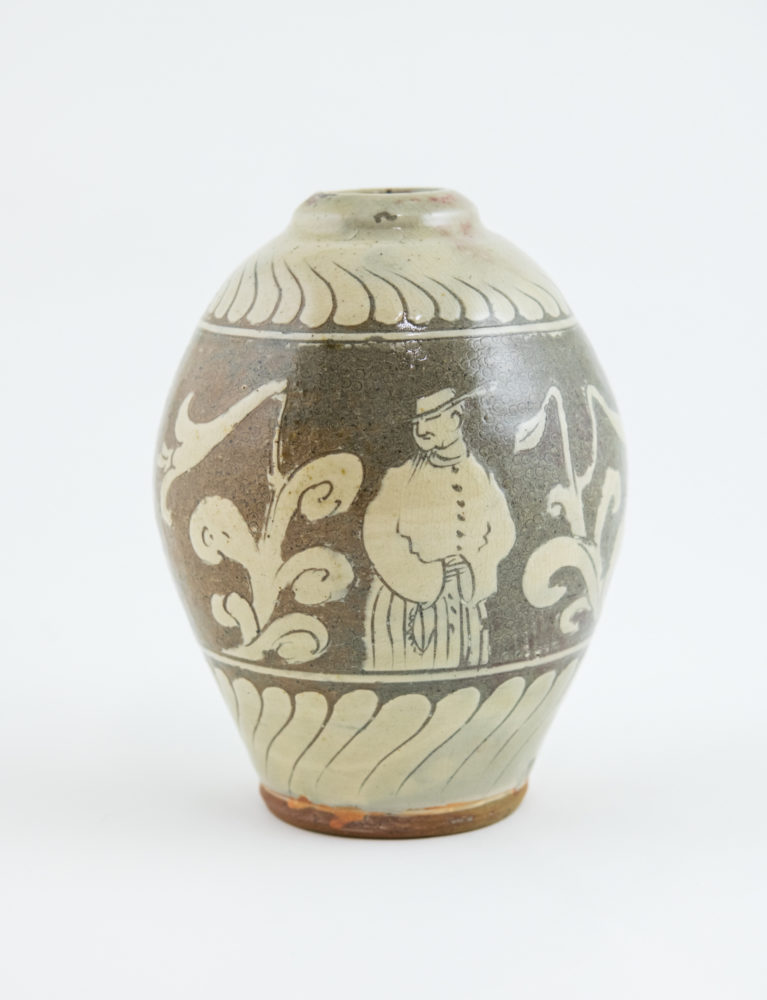
Bernard Leach, “Vase: Solomon amongst the lilies”, 1926, 21x4cm, stoneware; © Bernard Leach Estate, courtesy of Leicester Museums and Whitechapel Gallery.
We left New York City for our house in the Hudson Valley on March 13. I have my studio there and working in isolation is something I am used to. More recently, I have been feeling a pull to go to the city. New York City is where I consider home and where our business Apparatus is. We’re a non-essential business and have been closed, but we have a wonderful team of people who are staying involved and maintaining some production in a safe way.
I really wanted to contribute and reengage my work with Apparatus in how it was when Gabriel and I started. I have been doing metal finishing and patinas and applying leather to our Highwire and Arrow fixtures. It has been years since I have done this and the feelings of pride, and reconnecting with the craft of our business has touched me deeply. It has been a wonderful reminder of how far we have come and the amazing team we have that keeps it all going.
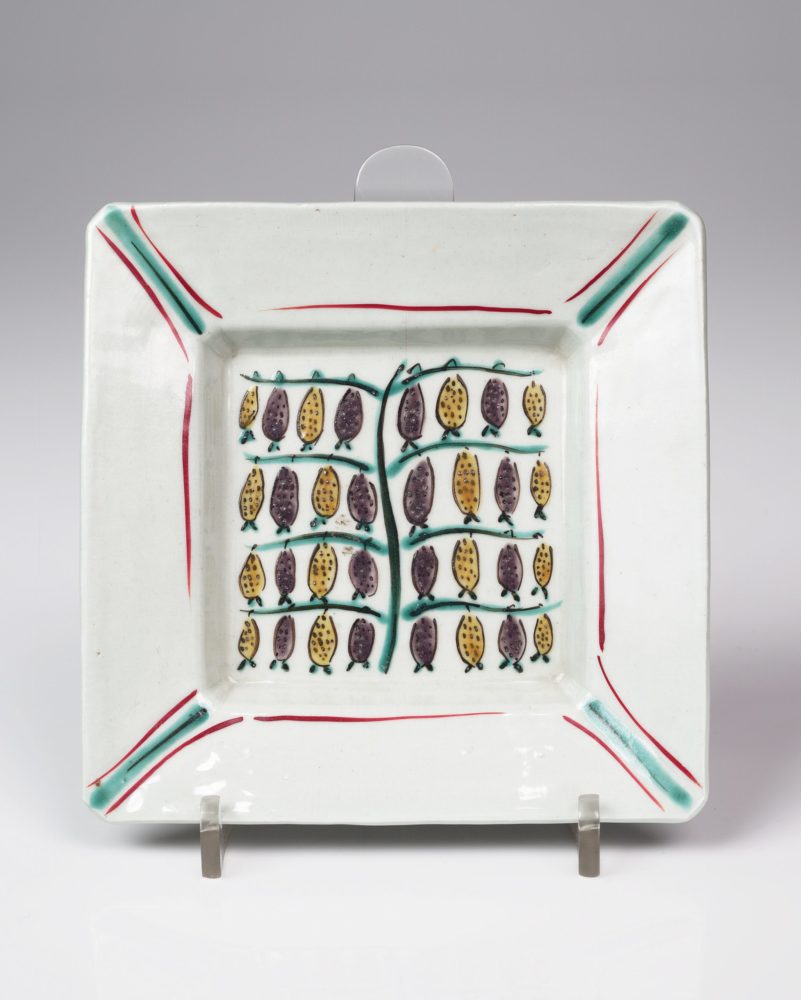
Bernard Leach, “Square dish”, 1950, 2 × 15.5 cm, porcelain; © Crafts Study Centre, University for the Creative Arts, courtesy of Whitechapel Gallery.
WW: How are you staying inspired? What are you cooking, reading, listening to, etc.?
JA: We decided to go into quarantine with a couple of dear friends—Andrew Cinnamon and Charlie Stackhouse from Cinnamon Projects. I’m like the traditional mom of our pod and I love being in the kitchen. It’s been wonderful having them with us. I love making a roast chicken from Athena Calderone’s cookbook, Cook Beautiful. I will then use what’s left to make a stock which I then make soups and stews from. An apple crisp or banana bead alternate weeks. Gabriel makes great salads, and Charlie is a master at pancakes and omelets. We have been eating well.
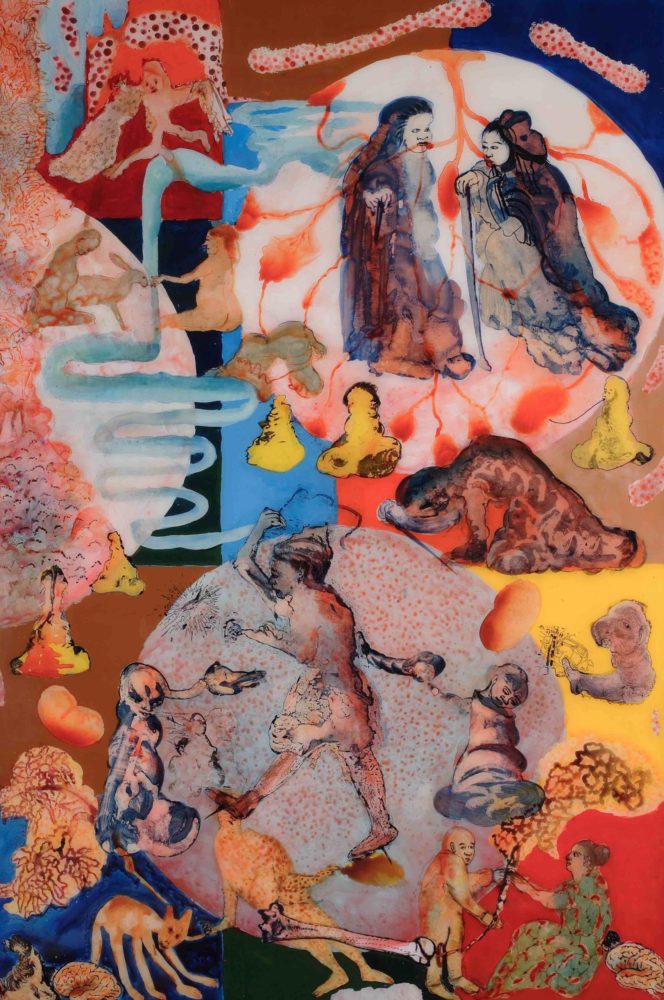
Nalini Malani, “Sita-Medea”, 2006, 183 x 122 cm, Reverse painting on acrylic sheet; © Nalini Malani, photo by Anil Rane, courtesy of Whitechapel Gallery.
In my studio, I typically like to start the day quietly. Hearing the birds and creek outside the studio doors helps ease my mind. As the day progresses, the music comes on. I’m a big fan of R&B and I secretly love ‘90s adult contemporary music. Anita Baker, Lisa Stansfield, and Basia are my all-time favorites.
WW: What led you to work in ceramics?
JA: I took my first ceramics class in high school and fell in love with it. I never thought about it as a professional thing to pursue. I grew up in a pretty conservative home and creativity was always appreciated, but it was regarded as a hobby. So, ceramics became the thing I would always go back to as a creative outlet. I mostly did work at the wheel making functional ceramics.
When we bought our house in Rhinebeck in 2014, I really wanted to have a space for a wheel and kiln. We found a home we could renovate with a second structure used as a workshop and garage. It was perfect!
When we got around to renovating the second structure in 2017, Apparatus was growing and my involvement in the “making” part of the business was becoming less of a thing. I love working with my hands and I knew it was the opportune time to focus on my ceramics practice.
WW: What informs your work?
JA: I started creating various shapes at the ceramics wheel. I would then cut into them and stack them, manipulating them into new forms. I wanted to move away from the idea of a vessel with the opening at the top.
I made a small round opening on the side of a closed-form sphere I had at the top of this stack of forms I created. It shifted my relationship with the work. I started talking to it. Giving it a personality. I knew there was something there worth exploring so I made more. As these characters started accumulating in my studio, they made me feel happy and safe. They kept me company.
This process took me back to my childhood and all the stuffed animals I had. My ceramics gave me the same feelings of adoration I had with those stuffed animals. I loved them! I didn’t have a lot of friends as a child; my stuffed animals represented a connection to others in a loving way.
Why not explore that kind of innocent relationship with inanimate objects as an adult? Creating a little community based on imagination with joy and good intentions.
WW: Tell us a bit about your exhibition, “The Piccolo Parade.”
JA: I have been working on this body of work for over three years. Refining the shapes, playing with color and texture, and doing all of this knowing I was creating a little world. I wanted to invite people into my imagination with the works I create.
The exhibition was scheduled to open March 12, but we had to cancel for obvious reasons. But the set was built, and we placed the works. I still wanted to see it and experience it. We built the set in a horseshoe shape, which stepped up as you approached the curve. The pieces become eye-level and walking into the opening allowed you to feel a part of this little universe of characters.
WW: What is the future of craft?
JA: I think the lines between art and craft and design are blurring and merging. I think the hierarchy of value as they relate to each is breaking down a bit.
People want to be surrounded by things that feel unique and give them pleasure. Things that feel like they have soul and intention. This includes everything from the painting on the wall to the chair you sit in and the cup you choose to have your coffee or tea in. It’s comforting when you have a personal connection with all of these things. I also believe this mindset allows us to be happier with fewer things in our lives and places value on those things you really want to live with.





